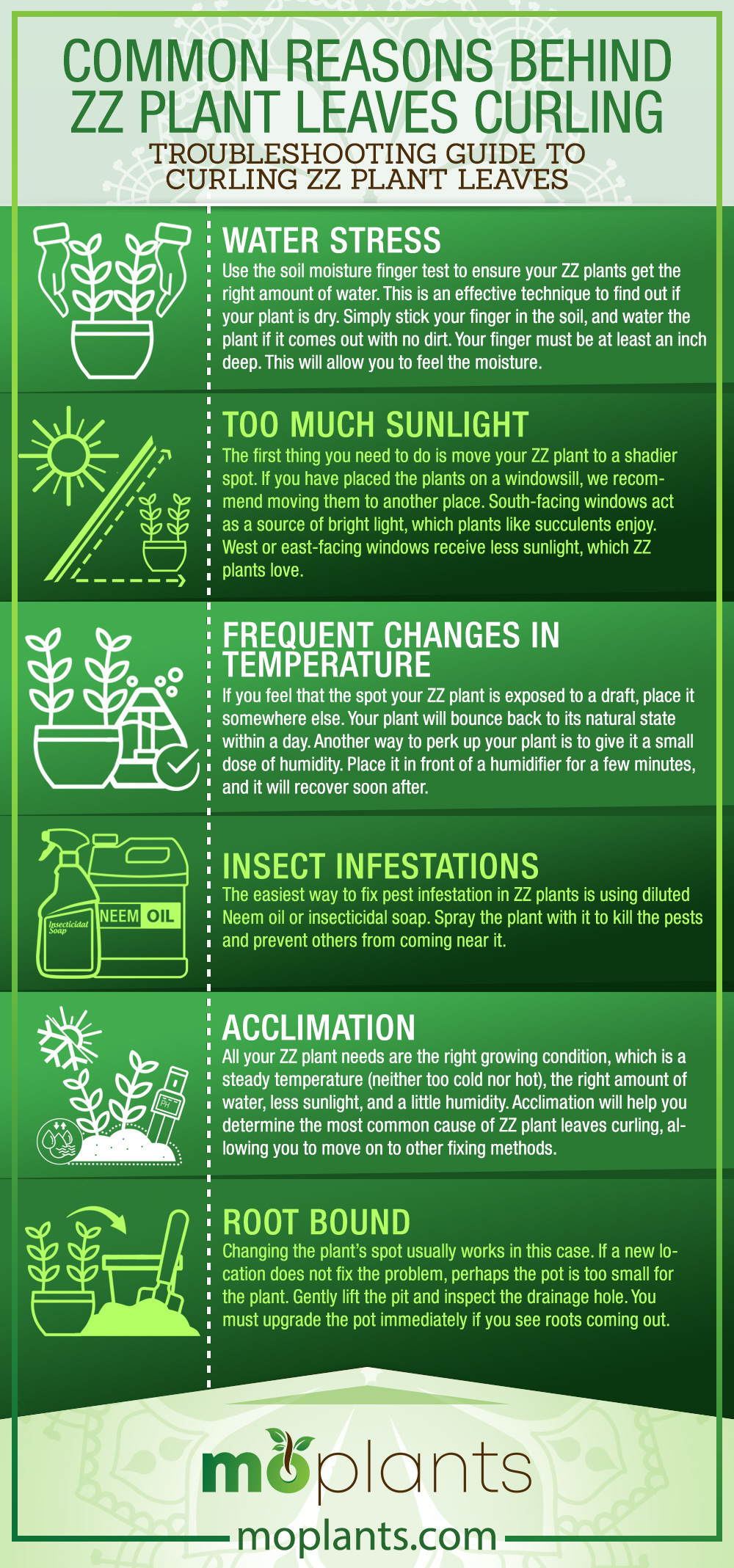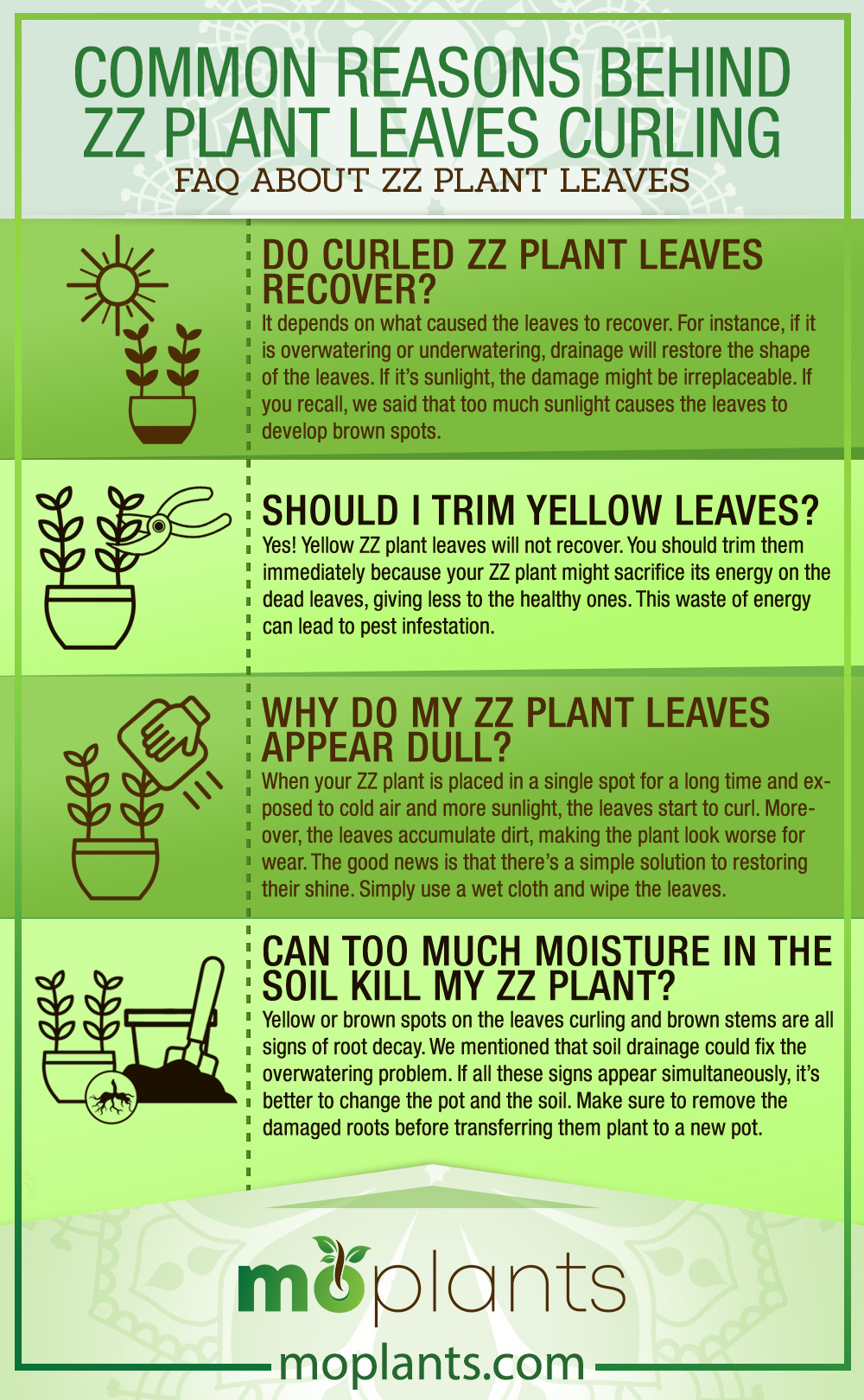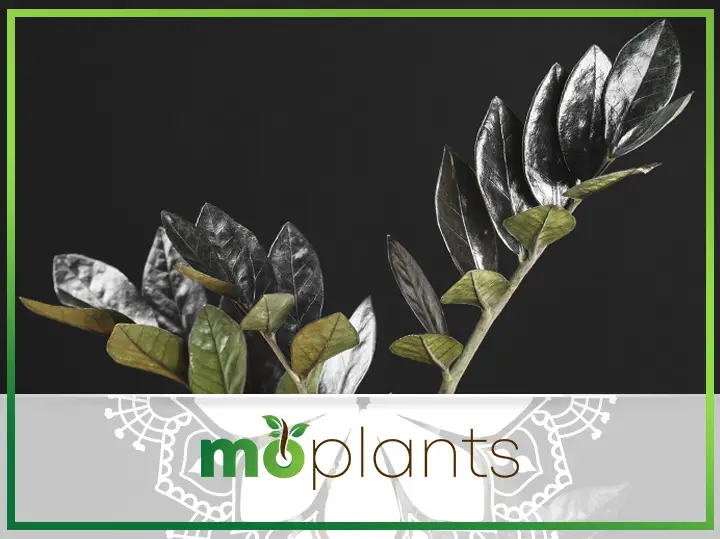A leafy trellis against the side shed, a lush garden, and potted plants on your windowsill, everyone wants to make their house appear beautiful to impress people at first glance. However, what happens when you’ve got a brown thumb? You can’t even take care of geraniums, considered the top low-maintenance plants.
Not to worry because we are here to solve your problem. Have you heard about the ZZ plant? Also known as Zamioculcas Zamiifolia, this houseplant belongs to the Araceae family. It is extremely low maintenance and a great option because it can survive periods of drought, low light levels, and neglect for months. When going on a vacation, you don’t need to ask your neighbor to water your plants.
ZZ plants are identified by their green, waxy, and thick leaves. Something isn’t right if you notice their color changing or the leaves curling. The good news is that a little curl won’t hurt your plants. They will bounce right back to their green state once the underlying cause is fixed.
In this blog post, we will cover the common causes that make ZZ plant leaves curl and what you can do to keep them straight and beautiful.
Troubleshooting Guide to Curling ZZ Plant Leaves
ZZ plants are usually found in large office buildings and malls. Due to their appearance and texture, they resemble fake plants. Since they require very little to no maintenance, they always look healthy. Nowadays, these plants have made their way into small pots and windowsill boxes, making people wonder how to take care of them. So, don’t be alarmed if you see anything out of the ordinary.
There are several reasons for your ZZ plant leaves curling. We have outlined all the problems below in detail and their solutions. Keep an eye on the plants to see how they respond to your actions. You will see a positive change within the first week. In case you don’t, try another trick.
Water Stress
When you take care of a plant for the first time, your thoughts might be like this:
“Did I water the plants?”
“Maybe, I didn’t.”
“I need to water the plants.”
Proceeds to fill the spray bottle to the brim and then douses the plant with water.
Now, you have overwatered the plant.
This is one of the most common causes of ZZ plant leaves curling. Also known as water stress, it causes the roots to get waterlogged. As a result, they cannot absorb oxygen, which damages the roots.
The problem doesn’t end here. Though ZZ plants are drought-tolerant, it doesn’t mean you don’t water them ever. Every now and then, they need a good drink. Both overwatering and underwatering can cause your ZZ plant leaves to curl.
If your ZZ plants are placed in a cool and dark area, they will survive without water for a month or two. However, if sunlight falls on them directly, they dry out pretty quickly. Hence, ZZ plants should be watered at least once a week in summer.
Solution
Use the soil moisture finger test to ensure your ZZ plants get the right amount of water. This is an effective technique to find out if your plant is dry. Simply stick your finger in the soil, and water the plant if it comes out with no dirt.
Your finger must be at least an inch deep. This will allow you to feel the moisture. In case you end up overwatering the plants, here’s what you should do:
- If you see water floating at the top, tilt the pot to remove it
- Use a chopstick to create a hole in the plant and place it in sunlight. This will dry the soil quickly and prevent root rot
- Take your plant out from the place and place it on a tray. Make sure the root ball does not get disturbed. Leave the plant out for an hour and two. Once it has dried, place it back in the pot
- Change your pot. Choose one with a draining hole at the bottom
Too Much Sunlight
ZZ plants happily survive without the sun. Too much of it, and you will see the leaves curling. They also develop brown burn spots that make your plant appear dead.
ZZ plants survive best in indirect or medium sunlight. The leaves curl in direct sunlight because they try to escape the light source. Sunlight dehydrates the plant and makes it feel slightly crispy, bringing us back to watering it. You already know what happens when you overwater your ZZ plant.
The ideal amount of light for this plant is 6 to 8 hours. If you have south-facing windows, keep your plant indoors. You can use groglights or other artificial lights as a light source, commonly used in winter.
Solution
The first thing you need to do is move your ZZ plant to a shadier spot. If you have placed the plants on a windowsill, we recommend moving them to another place. South-facing windows act as a source of bright light, which plants like succulents enjoy. West or east-facing windows receive less sunlight, which ZZ plants love.
Remember that once your ZZ plant leaves develop the burnt brown spots, no trick in the book will fix them. You will have to trim them. The sooner you handle this problem, the faster the plant will recover.
Frequent Changes in Temperature
Did you know that ZZ plants like warmer temperatures, ranging between 18°C and 27°C (65°F and 80°F)? If the temperature drops below 10°C, the leaves might curl.
Since ZZ plants are sensitive to sudden temperature changes, they should be placed in a spot that receives medium slight and a cool breeze. In the path of an air conditioner, your plant will experience shock, which also can make the leaves curl. After a while, you will see your ZZ plant appearing limp.
Solution
If you feel that the spot your ZZ plant is exposed to a draft, place it somewhere else. Your plant will bounce back to its natural state within a day.
Another way to perk up your plant is to give it a small dose of humidity. Place it in front of a humidifier for a few minutes, and it will recover soon after.
Insect Infestations
Mealybugs, aphids, and thrips are a huge threat to ZZ plants. They suck the cell sap, which makes the leaves curl. These pests first pierce the leaves, exposing the plant to further damage and then feats on its nutrients. As a result, the leaves develop a distorted shape and die after a few days.
Solution
The easiest way to fix pest infestation in ZZ plants is using diluted Neem oil or insecticidal soap. Spray the plant with it to kill the pests and prevent others from coming near it.
Acclimation
The condition of the store plants grow in is quite different from your home. Curling leaves in ZZ plants are quite common when you bring them indoors.
Solution
All your ZZ plant needs are the right growing condition, which is a steady temperature (neither too cold nor hot), the right amount of water, less sunlight, and a little humidity. Acclimation will help you determine the most common cause of ZZ plant leaves curling, allowing you to move on to other fixing methods.
Root Bound
If all your methods fail and your ZZ plant leaves are still curled, the plant’s roots may be bound. Roots are considered bound when crowded, causing the plant to sulk. As a result, the leaves appear droopy and weak.
Solution
Changing the plant’s spot usually works in this case. If a new location does not fix the problem, perhaps the pot is too small for the plant. Gently lift the pit and inspect the drainage hole. You must upgrade the pot immediately if you see roots coming out.
Infographic

Trimming ZZ Plants
When ZZ plant leaves develop brown spots, you must cut out the dead stems. While the plant is easy to maintain, you should take a few cautionary steps when disposing of the dead leaves. All parts of this plant are toxic. Place the cuttings in a plastic bag and dispose of them properly.
You will likely develop a few allergy-like symptoms if you accidentally touch the plant’s sap. If you accidentally ingest the plant, you will experience nausea, diarrhea, and vomiting. Rush to your nearest hospital for treatment if the symptoms become severe.
FAQ About ZZ Plant Leaves
Do Curled ZZ Plant Leaves Recover?
It depends on what caused the leaves to recover. For instance, if it is overwatering or underwatering, drainage will restore the shape of the leaves. If it’s sunlight, the damage might be irreplaceable. If you recall, we said that too much sunlight causes the leaves to develop brown spots. You will have to trim these leaves and place the plant in a new spot to allow the rest of the leaves to recover.
In case of sudden temperature changes, you need to find the right spot, and your ZZ plant will be as good as new. As for pest infestation, your plant might be completely compromised. We recommend you try the DIY spray we discussed and dispose of it if the plant doesn’t recover within a week.
Should I Trim Yellow Leaves?
Yes! Yellow ZZ plant leaves will not recover. You should trim them immediately because your ZZ plant might sacrifice its energy on the dead leaves, giving less to the healthy ones. This waste of energy can lead to pest infestation.
Why Do My ZZ Plant Leaves Appear Dull?
When your ZZ plant is placed in a single spot for a long time and exposed to cold air and more sunlight, the leaves start to curl. Moreover, the leaves accumulate dirt, making the plant look worse for wear. The good news is that there’s a simple solution to restoring their shine. Simply use a wet cloth and wipe the leaves.
Can Too Much Moisture in the Soil Kill My ZZ Plant?
Yes! ZZ plants are not good at tolerating waterlogged environments and sogginess. The damp condition causes too many problems, leading to irreparable damage. Yellow or brown spots on the leaves curling and brown stems are all signs of root decay.
We mentioned that soil drainage could fix the overwatering problem. If all these signs appear simultaneously, it’s better to change the pot and the soil. Make sure to remove the damaged roots before transferring them plant to a new pot.
Infographic

Pruning ZZ Plants
After identifying the cause behind the curling leaves:
- Prune the areas carefully without disturbing the healthy stems
- Trim the rotted stem closer to the rhizome. If the stem is thick, ensure to position your hand out of the way the sap might shoot out
- Better wear rubber gloves if you have sensitive skin
Conclusion
Before buying anything, you must read up on how to fix it. This information would save you from panicking and being overwhelmed when a problem occurs. Coming up with a care routine for your ZZ plants will allow you to keep them fresh and healthy, proving that you have a green thumb and not a brown one.
One of the best things about ZZ plants is that they can tolerate light quite well. You don’t need to fuss over them because even with months of neglect, you will find them in perfect condition.
A ZZ plant is near-invincible. It is a delightful houseplant because it has an upright, interesting curving stem and glossy green leaves. Yes, it is low maintenance but not indestructible. The harsh sunlight of summer will destroy the leaves. Simply follow the plant care tips mentioned, and your windowsill will keep looking fresh and beautiful. All in all, it’s the plant to have for people with a brown thumb.

